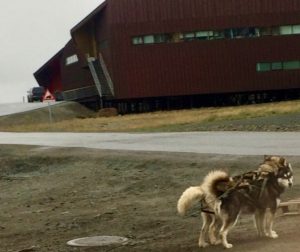What were your goals for the course in Svalbard?
My goals were to (a) learn new skills, (b) see a new environment, (c) meet people of similar interests and, (d) develop collaborations.
To what extent did you realize these goals?
(a) Learn new skills: Yes. I learned how to calculate SLA, take various trait measurements, the nuances of data management, and how to use ‘R’ and ‘ggplot’.
(b) See a new environment: Yes. We visited the valleys, coastlines and ridges around Longyearbyen and Isfjorden.
(c) Meet people of similar interests: Yes. I met many great people with whom I have similar interests.
(d) Develop collaborations: Yes. Many opportunities were realized for collaborations and the development of quality products.
What did you learn about yourself during this course?
I learned that working with an international and multicultural group is rewarding, inspiring and motivating. There are many skills that are essential to a data collection and a field campaign. It is refreshing to learn with people from different countries, especially those from Peru, China, Mexico, Norway, U.K., Sweden and Finland.
What did you learn about public perceptions of climate change in Svalbard?
Most people in Svalbard notice changes in their weather and global weather patterns and accept climate change. Most, however, admit that they do not understand it or know much about it.
Do most people accept that the planet is warming, and that this is largely being caused by human activities? Yes. Without having to directly ask individuals, it was evident that residents are aware of the role of humans in climate change. It did seem that, due to the first world status and living conditions enjoyed by Logyearbyen residents (government provided infrastructure, running water, plumbing, roads), the reality of climate change is still somewhat distant from daily life in Longyearbyen.
Or, was this topic controversial? This topic was not a source of controversy to any of the individuals I interviewed/surveyed. On the contrary, people seemed to respond to the topic with a bit of shame. This is something many individuals from North America also experience regarding the topic of climate change.
How does this compare to public perceptions of climate change in your home country? The attitude toward climate change and the role of humans was similar to that encountered (on average) in my home country and region. Like Norway, North America has large corporate fossil fuel operations. The fossil fuel industry has the money to carry out whatever means necessary to continue to lobby for and sustain a market for their product. While focusing on individual decisions as a consumer and citizen can make a difference, the presence of the corporate fossil fuel operations is ever present.
What was your experience with surveying people in Svalbard? My experience in surveying people was, overall, very positive. Unlike some students, I did not encounter any disgruntled individuals. Perhaps this is because I was more reserved in selecting people to ask to participate. As a result, I completed only five surveys. Everyone I asked gladly participated.
Do you feel that you collected valuable information? What would you do differently next time?
Yes. The information collected is valuable. There are some things I would like to have changed. However, based on the nonrandom convenience design of the project, the changes are not realistic or feasible. People generally took 10 to 15 minutes to complete the survey. If given more time, they might elaborate on the answers given.
What went well? Having an incentive (the sunglasses) was helpful. People were appreciative of the glasses and when I told them about the BIOCEED logo and what we were doing in Longyearbyen they were intrigued and usually said something such as, ‘thanks for your efforts’.
I enjoyed talking with each of the five people interviewed. To protect their privacy, it is not possible to mention many specifics or describe a particular discussion.


